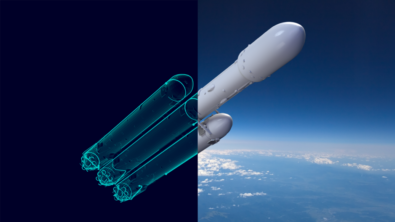Multisystem products require integration, collaboration

Think about the major systems in your body: vascular, muscular, skeletal, nervous, lymphatic, digestive. These aren’t even all of them, but if any of the body’s major systems stops working, the body stops working. No one system could do its job for long without being connected to the other systems.
Many common products are like the human body. Separate-but-independent systems need to be connected to one another for the product to work. It used to be that things like plant machinery, cars, airplanes, telephones and other multi-system products relied on mechanical systems, electronics systems or both (mechatronics) to operate. These systems are still widely used, but digital systems and technologies are becoming omnipresent, and this is challenging manufacturers to change how they innovate and design complex products.
What’s different about the Industry 4.0 age versus earlier industrial revolutions is that change is being driven by forces outside of the manufacturing sector, such as mobility, the Internet of Things, machine learning and even social media.
Not only do manufacturers need to plan-in support for and connectivity among these and other discrete technologies and systems, but they also have to realign their internal teams to work effectively and efficiently in a new, multi-disciplinary engineering paradigm. Technical experts need to work together simultaneously, as do their outputs.
Because digital systems are a gateway connection to other in-demand technologies—as in, additive manufacturing and customized software applications—the challenge manufacturers face is two-fold: how to connect digital systems to mechanical and electric systems for optimal operation; and how to connect digital systems to other digital systems.
A common challenge is that underlying product design technology that once met modern needs doesn’t enable the higher level of connectedness needed to design and manufacture multi-disciplinary products on a large scale.
Historically, MCAD, ECAD, control systems, simulation software and other systems don’t talk to one another or easily share data, so collaboration can be a manual effort that takes longer and is prone to errors. It’s also difficult for different teams to work simultaneously when they are using different programming languages and file types.
What’s needed is one unified technology platform that allows teams to start a product life with a completed “digital twin” model, which can then be used for reference and simulation in all types of specialized work across that product’s life—from design to decommissioning.
When product data is integrated and made accessible through function-specific applications within a common platform, product development teams can neutralize variation among file types, languages, data and specialized software to establish standardized processes that can run concurrently.
Companies like Pilatus, a leading aerospace manufacturer known for innovation, embeds a design platform that is scalable for whatever changes customers and regulators are likely to throw at them as they grow. The software is Siemens NX.
The Switzerland-based defense contractor is facing ever-increasing product complexity combined with steadily-increasing time-to-market pressure. These challenges can be met only with a comprehensive knowledge management, a focus on end-to-end processes and efficient software tools—in other words, a fully developed and tailor-made PLM strategy.
One of the specific challenges Pilatus faces as it grows is meeting new regulatory requirements as it expands to new geographic markets and introduces new technology in its aircraft designs. Using NX software helps to effectively and efficiently manage this constant and changing need and keep multiple systems connected.
“The use of Teamcenter supports our management of the entire process and fulfills all requirements of our customers and authorities. Our tight control and best practices would not be possible without it,” says Walter Rentsch, senior design engineer.
For Pilatus, complex products and the management requirements that go with them are just part of being a leader in innovation. Being able to successfully connect discrete systems, while meeting changing customer and regulatory requirements, is core to that innovation advantage. But as the company’s leading designers say, that wouldn’t be possible without unified product design technology that supports multi-disciplinary engineering.
Final thoughts
Our discussion on multi-disciplinary design has provided deeper details on a high-level trend that is becoming the normal state for a growing number of manufacturers. That is, as more digital capabilities are integrated into commercial and industrials products, both product innovation and product complexity rise.
When production is at a global scale, process complexity must be controlled to optimize profitable growth through product innovation. Engineering workflows also need to be able to interact in new ways to hasten and streamline product design.
The biggest challenge for global enterprises lies in legacy product-design software, which is simply not made for modern multi-disciplinary design success. But commercial and industrial producers should see this reality as an opportunity as well as a challenge.
After all, modern design solutions are more unified, streamlined, secure and scalable; and thus inherently faster, more efficient and more cost-effective.

This concludes our introduction to our future desktop series.
About the author
Himanshu Iyer is a product marketing manager for NX Design at Siemens PLM Software. Himanshu has 15 years of experience with CAD, CAE, CAM and PLM working with partners and customers across multiple industries. Working with the broad NX portfolio, his primary focus is on the areas of multidisciplinary design, generative design and design for additive manufacturing to enable customers develop and optimize products using new design tools and methodologies. Himanshu holds a master’s degree in mechanical engineering and lives in southern California in the United States.


